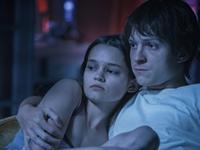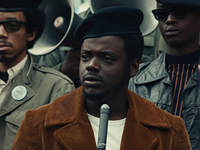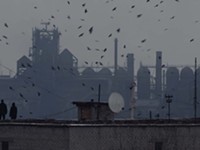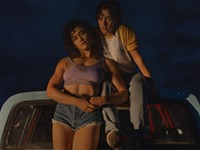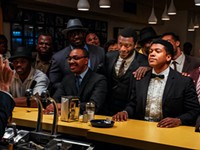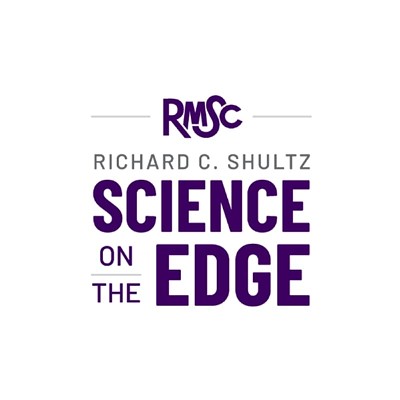[
{
"name": "500x250 Ad",
"insertPoint": "5",
"component": "15667920",
"parentWrapperClass": "",
"requiredCountToDisplay": "1"
}
]
"Kong: Skull Island" director Jordan Vogt-Roberts clearly paid attention to the criticisms leveled at Gareth Edwards, whose 2014 "Godzilla" reboot used a less-is-more approach to the massive, atomic lizard. By contrast, Vogt-Roberts gets the human-smashing, monster action going early and often. He loads his movie up with as many man-eating beasts as he can fit into the two-hour runtime. Yet somehow we come away with a movie that's only slightly more exciting than a day at the petting zoo.
Set in the same universe as Edwards' film, "Skull Island" takes place in the 1970's, shortly after the Vietnam War. John Goodman plays Bill Randa, a crackpot scientist who believes that ancient monsters still exist on Earth, and he desperately wants to prove it. With the help of his assistant (Corey Hawkins), Randa convinces a US Senator (Richard Jenkins) to give his crew the necessary funding and even a military escort -- led by Colonel Packard (Samuel L. Jackson in the Samuel L. Jackson role) -- to venture to Skull Island, an isolated South Pacific location where he believes these creatures might be found. Along for the ride is a war photographer (Brie Larson) and a British SAS officer (Tom Hiddleston, woefully miscast as a dour, square-jawed hero type).
It turns out Randa's not such a crackpot after all, as no sooner do the scientists start dropping bombs (supposedly for the purposes of seismographic mapping) than Kong appears to swat their helicopters out of the sky and lay waste to a large portion of the expedition team. The crew gets separated, eventually crossing paths with a World War II fighter pilot (John C. Reilly, the film's MVP) who crash-landed on the island 30 years ago, as they search for an escape and avoid being picked off by the island's resident population of deadly beasts. Among the most vicious predators are a species of giant, toothy reptiles the pilot dubs "skullcrawlers."
Vogt-Roberts' "Kong: Skull Island" is an old-school monster movie in its most conventional form. Any sense of personality has been buffed away to give us the most eccentricity-free version of studio filmmaking hundreds of millions of dollars can buy. Like "Jurassic World" director Colin Trevorrow before him, Vogt-Roberts is a Sundance alum plucked from the world of independent cinema and gifted the keys to a massive franchise after finding success with a micro-budgeted indie (in this case "The Kings of Summer"). Also like Trevorrow, there's some major growing pains as Vogt-Roberts struggles to adapt from small-scale storytelling to the world of maximalist, blockbuster filmmaking.
It doesn't feel like the director considered much beyond what would look cool on screen. He tosses out references to monster and war movies of the past, but never really adds anything new to the mix. "Apocalypse Now" is an obvious touchstone, although the influence doesn't extend much below surface aesthetics, accompanied by an obvious soundtrack of 70's-era needledrops (expect a lot of Creedence Clearwater Revival). Vogt-Roberts can craft a striking image, but when every shot's a money shot, they start to lose their impact. As good as it looks, "Kong: Skull Island" is rarely exciting or fun to watch -- and nothing is as memorable or terrifying as the insect pit that Adrien Brody and company had to fight their way out of Peter Jackson's "Kong" remake in 2005.
The script does attempt to say something more meaningful, admonishing the use of military violence against that which we don't understand, and how humanity has a nasty habit of creating its own enemies through fear and aggression. It's ripe material for the kaiju genre -- after all, the original Japanese "Godzilla" was a potent metaphor for a country still reeling from the devastating impact of nuclear war. But wrapped around a movie in which a gas mask-wearing Tom Hiddleston slices through a flock of pterodactyls with a katana, the message gets muddled.
There's also way, way too many characters. Sure, you need those extraneous people around to be smooshed by Kong's mighty paw or skewered by the legs of a giant spider. But between the soldiers and the scientists, there's far too many to keep track of or care about. Even Larson and Hiddleston -- two of our most likeable and charismatic actors -- barely make an impression.
But the prehistoric creatures of "Skull Island" are impressively rendered, particularly Kong himself. The film gives us the largest and most detailed version of the mighty ape we've seen on screen; performed by motion-capture actors Toby Kebbell and Terry Notary, he's never less than convincing. But Vogt-Roberts chooses to portray him as more force of nature than full-blooded character. As impressive an effect as he is, Kong lacks the wonderful characterization that Jackson's film provided. For someone of such monstrous size, as a character he's curiously weightless.
Check back on Friday for additional film coverage, including a review of "The Belko Experiment."

